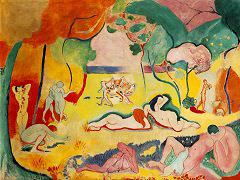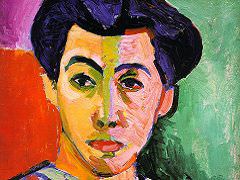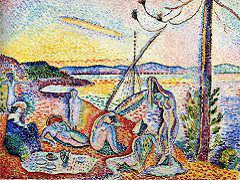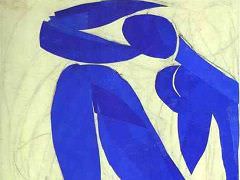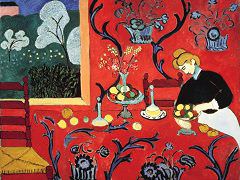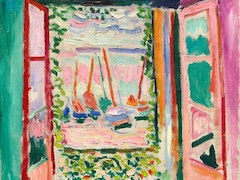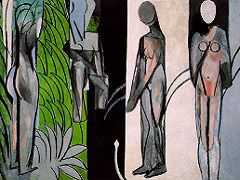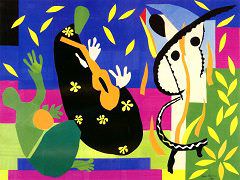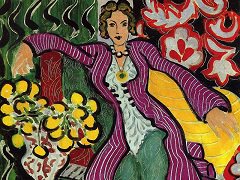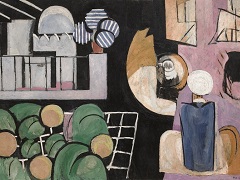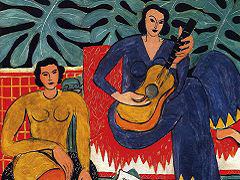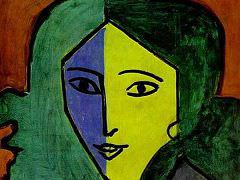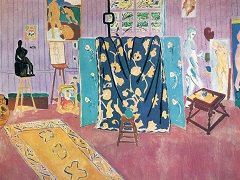Goldfish and Palette, 1915 by Henri Matisse

Of Matisse's several still-life subjects, few were more productive than that of goldfish. They occupy a position in his work of the early teens analogous to that of the reclining odalisque in the twenties. The languorous, fluid bodies of these two motifs provoked, however, rather different pictorial results, given the successive stages of his development. This iconographic association is made explicit. And on the level of the unconscious, may we not see in this theme - the contrast between an aqueous and an atmospheric world - a marginal development of the motif of the Venus Anadyomene that is obvious in both versions of Le Luxe?
In the present version the fish in their round aquarium are placed on a table in front of a window in a curious, decoratively Cubistic manner, one which probably owes much to the artist's discussions and arguments with Pablo Picasso dating from the summer of 1914. From the strict Cubist point of view, the composition is not especially profound, and yet certain general tactics of his rivals' art are here rather naturally integrated into Matisse's more decorative approach, with its greater reliance on surface tensions. The space through the open window has been arbitrarily altered - interrupted by an inexplicable dislocation of what might be wall panels or window shutters, which are moved to the center, forming a dark vertical register. This type of composition employing contrasting vertical bands of differing hue or value turns up later in the final Bathers by the River, and this device, transformed into wedge-shaped areas of contrasting pigment, reappears in the two later versions of The Dance.

